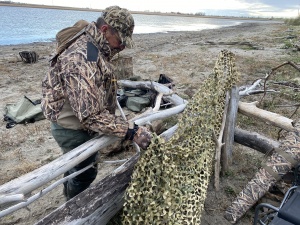The word “drought” seems to be the flavor of the month. Not one news cycle or news source can carry on without it. The current drought is bad news, no doubt. No sane person could discount its horrendous effect. But it might be prudent to look at the current U.S. drought in historical context.
A Brief History Of Modern Drought
This is the sixth drought in a cycle going back to 1890. There was a drought in the 1930s (the grandaddy), another in the 1950s, a less severe pair in the mid-60s and late 80s, a more significant drought in the early 2000s and now this, the fairly severe drought of the early 2020s. It is true that we still don’t know where this current drought will bottom out, but historically, they all have a bottom, some worse than others.
Droughts are tough, as we are now seeing again. They are hard on agriculture, including both crops and livestock. Droughts can and have led to terrible fires and losses of personal property, and there are untold costs to society as a whole. They are also hard on wildlife populations, particularly those critters that depend on water for rearing the next generation. Waterfowl would be high on that list.
But droughts, as well as wet years, are part of a cycle that nature is well equipped to handle. Ecosystems, including their plant and animal life, have been dealing with these cycles for millennium. Some seeds, microbes and invertebrates actually rely on such cycles and flourish because of them.
Droughts And Waterfowl
There is no dou bt that the current drought cycle will have an effect on what waterfowl hunters will see in the skies this fall. How that plays out is yet to be seen. Nothing’s really changed as far as limits go. Perhaps we can be thankful that we aren’t back in 1962 when there was a 23-day season and a two-bird limit (one mallard) in the Mississippi Flyway.
bt that the current drought cycle will have an effect on what waterfowl hunters will see in the skies this fall. How that plays out is yet to be seen. Nothing’s really changed as far as limits go. Perhaps we can be thankful that we aren’t back in 1962 when there was a 23-day season and a two-bird limit (one mallard) in the Mississippi Flyway.
My friend and occasional hunting partner, Jack, is a long-time prairie hunter. Having that in common, we talk a lot about good years and bad, cycles of wet and dry. “When there’s water, there’s birds,” Jack likes to say. It sounds too simple, but really, it is that simple.
We like to harken back to 2009. We were moving forward in a wet cycle on the prairie following the nasty drought of the early 2000s. Then in a freak series of weather events, northern South Dakota and a portion of southern North Dakota got gobs of rain. Cattle in barnyards were standing in knee deep water, soybean and corn fields were flooded, ditches collected so much water they looked like marshes, and the countryside was covered with ducks and geese—and I mean, covered. How sweet it was!
I’ll spare you the stories of glory, but just end with this: The past is prelude—we’ve seen this before and we will see it again.
